By Jake Bernstein
ProPublica
Joseph Caramadre has spent a lifetime scouring the fine
print. He's hardwired to seek the angle, an overlooked clause in a
contract that allows him to transform a company's carelessness into a
personal windfall. He calls these insights his "creations," and he
numbers them. There have been about 19 in his lifetime, he says. For
example, there was number four, which involved an office superstore
coupon he parlayed into enough nearly free office furniture to fill a
three-car garage. Number three consisted of a sure-fire but short-lived
system for winning money at the local dog track. But the one that landed
him on the
evening news
as a suspect in a criminal conspiracy was number 18, which promised
investors a unique arrangement: You can keep your winnings and have
someone else cover your losses.
Caramadre portrays himself
as a modern-day Robin Hood. He's an Italian kid from Providence, R.I.,
who grew up modestly, became a certified public accountant and then put
himself through night school to get a law degree. He has given millions
to charities and the Catholic Church. As he tells his life story, his
native ability helps him outsmart a phalanx of high-priced lawyers,
actuaries and corporate suits. Number 18 came to fruition, he says, when
a sizeable segment of the life insurance industry ignored centuries of
experience and commonsense in a heated competition for market share.
Federal prosecutors in Rhode Island and insurance companies paint a
very different picture of Caramadre: They say he's an unscrupulous con
artist who engaged in identity theft, conspiracy and two different kinds
of fraud. Prosecutors contend he deceived the terminally ill to make
millions for himself and his clients. For them, Caramadre's can't-miss
investment strategy was an illusion in which he preyed on the sick and
vulnerable.
ProPublica has taken a close look at the Caramadre
case because it offers a window into a larger issue: The transformation
of the life insurance industry away from its traditional business of
insuring lives to peddling complex financial products. This shift has
not been a smooth one. Particularly during the lead up to the financial
crisis, companies wrote billions worth of contracts that now imperil
their financial health.
In a series of detailed interviews,
Caramadre said the companies designed the rules; all he did was exploit
them. Their hunger for profits in a period of dizzying growth and
competition, he contends, left them vulnerable to someone with his
unusual acumen. The companies have argued in court that Caramadre is a
fraud artist who should return every last dime he made. In his rulings
to date, the federal judge hearing the civil cases has agreed with
Caramadre's contention that he was doing what the fine print allowed.
The secret to Caramadre's scheme can be glimpsed in a 2006 brochure for
the ING GoldenSelect Variable Annuity. On the cover is a photo of a
youthful older couple. The woman sits next to a computer, sporting a
stylish haircut and wire-framed glasses. A man with graying hair and an
open collared shirt, presumably her husband, is draped over her in a
casual loving way. Images of happy vibrant seniors enjoying their golden
years together — frolicking on the beach, laughing in chinos next to a
gleaming classic car, enjoying the company of grandkids — populate the
sales material for life insurance's hottest product — the variable
annuity.
As outlined in the brochure and in countless others like it, the
contracts worked this way: The smiling couple gives money to ING in
return for the promise of future payments. The consumer chooses how the
money is invested, usually in mutual-like funds that have stocks, bonds
or money market instruments. This is the "variable" part of the
equation.
There are two main benefits to this arrangement not
found in the ordinary mutual funds sold by brokers and financial
advisers. Taxes on
variable annuities
are deferred until the consumer takes out cash, which means it's
possible to move your money among funds without paying taxes until the
money is withdrawn. (An investor who cashes in shares of a mutual fund
must pay taxes on any gains.)
Variable annuities also typically
include a life insurance component called a guaranteed death benefit.
With this guarantee, if the market crashes — but you die before your
investment recovers — your beneficiary still gets a lump sum equal to
either the death benefit or the value of the investments in your
account, whichever is greater.
The target audience for brochures
like that of ING's are people nearing retirement with a nest egg to
safeguard and perhaps grow a bit. It's a huge and growing market. In
2011, as the first wave of baby boomers began to retire, there were more
than 40 million people age 65 or over. Between 2001 and 2010, life
insurance companies sold about $1.4 trillion worth of variable
annuities, according to
LIMRA, an industry association.
Caramadre got the seeds of his idea in the mid-90s when he attended an
investment seminar for insurance agents. He quickly saw how variable
annuities could be a hot product for insurance companies — particularly
when they could charge hefty fees for attractive goodies like the
guaranteed death benefit.
Caramadre decided that he wouldn't
offer variable annuities to clients in the way the insurance companies
envisioned. It was too expensive. "They are just whacking you for fees,"
he says.
What Caramadre wanted was a way to get his clients the benefits without their having to die.
* * *
Society has long frowned on certain behaviors. Taking out an insurance
policy on a friend or neighbor and killing them? Not acceptable. Taking
out a life insurance policy that gambles your neighbor will die soon,
even without your help, also crosses the line. Today, it is
well-established law that one must have what is called an "insurable
interest" before purchasing an insurance policy on someone else's life.
The person who benefits from the policy must be a relative or business
associate who himself would face financial or familial loss from the
death.
Insurable interest worked fine for 200 years or so until
the life insurance business itself changed. Despite its name, the
industry doesn't sell as much "life insurance" anymore. Life companies
now peddle financial services, particularly annuities. Variable
annuities were developed in the 1950s, initially as a way to give
teachers retirement options. Insurable interest was not an issue and
could have been an impediment to widespread adoption of the product.
Caramadre did his research and concluded that Rhode Island law did not
require that people buying variable annuities have an insurable
interest.
As imagined by the insurance companies, variable
annuities have two participants. There's the investor, the person who
puts up the money. That person typically also serves as the annuitant,
or the "measuring life." If that person dies, the death benefit is paid
to the beneficiary, usually a spouse or child.
Caramadre
realized it didn't have to be that way. There was no requirement that
the investor and the annuitant be the same person. In fact, as he read
the contracts, the annuitant didn't need to have a relationship with the
investor at all. Caramadre or one of his clients could buy an annuity
on the life of someone who was not expected to live long and then pocket
any profit when that person died.
"All we need to do is replace the necessity of the investor having to die, with someone else, dying," says Caramadre.
If they chose well, the account went up and they reaped the benefits.
If they chose poorly, the death benefit kicked in and they recouped
their original investment.
"If you won, you keep the winnings. If you lose, they give you your money back," says Caramadre.
There is something morally unsettling about this. Put simply: Caramadre
was setting himself and his clients up to profit from the demise of
strangers. While the macabre aspect of his scheme offends many, it did
not make Caramadre squeamish. He rationalized that a lot of people —
funeral homes, hospitals and cemeteries — make money from the dead and
dying, why not him?
Caramadre's insight might have remained a
curiosity were it not for something called "the arms race." As
competition intensified in the mid-2000s, many life insurance companies
launched an unprecedented war for customers, offering benefits they now
acknowledge were far, far too favorable.
The insurance
companies' contracts provided little defense against Caramadre's
approach. For policies under a million dollars, they didn't check the
health status of people receiving variable annuities. Instead, they
limited the ages of annuitants or the amount that could be invested. All
that the companies required for persons to serve as a measuring life
was their signature, birthdate and Social Security number. Some didn't
even require the signature.
There was usually only a single
line that touched on insurable interest in the contract. Companies would
ask if a relationship existed between the investor and the annuitant.
Caramadre and the men with whom he worked would either leave the answer
blank or type in "none." The companies, eager for business, took the
policy anyway.
There have been at least eight lawsuits filed in
Rhode Island's federal district court relating to Caramadre's scheme.
Insurance companies Nationwide, Transamerica and Western Reserve have
all sued. The companies have not fared well in civil court. United
States District Court Judge William Smith keeps knocking out claims. The
companies then re-file new ones. As of this writing, Western Reserve
has filed five successive complaints against Caramadre in the same case.
When he dismissed Nationwide's complaint, Judge Smith questioned
whether the company ignored its own contracts. In the Western Reserve
case,
Judge Smith wrote,
"It is a bit ironic for Plaintiffs [the insurance companies] to suggest
that they did not know the true nature of contracts that they
themselves drafted."
The lawyer who represents both Transamerica and Western Reserve declined to comment.
The more serious charges are the criminal ones. Caramadre usually paid
dying people between $3,000 and $10,000 for agreeing to serve as
annuitants. He characterizes the arrangement as a win-win for everybody
but the insurance companies. Prosecutors charge that he instructed
participants in the scheme to lie, to steal identity information and to
forge the signatures of annuitants in an effort to defraud insurance and
bond companies.
The
story as told by prosecutors
goes like this: In an effort to get rich, Caramadre and his associates
enticed the dying to give up their vital information by offering them
$2,000 as a charitable donation. More than 150 people received the
$2,000. Of those, at least 44 went on to play a role in number 18.
The government alleges that Caramadre directed his associates to lie to
both the annuitants and the insurance companies. Sometimes, prosecutors
assert, the dying people had no idea someone else stood to profit. In
other instances, the indictment says, dying people were told that their
signatures were just for the receipt of the charitable donation. A
Caramadre employee allegedly told other family members they would be the
beneficiaries. In five cases, the government says, signatures were
forged.
Caramadre denies the accusations. He says that he
instructed his employees to properly explain the program to the
annuitants and that he would never permit forgeries.
Youthful
looking with a round expressive face etched with deep lines across his
brow, Caramadre appears more like an eager-to-please bulldog than a
criminal mastermind. During the arms race, he says, companies did not
complain when Caramadre paid their hefty fees and later filed claims
seeking death benefits. Family members didn't object either. Everything
changed in 2009 with the financial crisis. Companies started to feel
the consequences of the arms race, the insurance companies sued and the
FBI began visiting relatives and surviving annuitants. Today, some of
those family members are the strongest witnesses for the prosecution.
"I lose my mom, who is my best friend, my world, and in me, losing my
mother forever at the age of 64, you, in turn, profit and get X amount
of dollars," says Stephanie Porter, whose mother received $2,000 from
Caramadre before she died of cancer. "It's slimy what the man did."
* * *
Caramadre learned to hustle early. He graduated from the University of
Rhode Island in three years with an accounting and finance degree,
supporting himself through odd jobs that included running his church's
weekly bingo game. After graduation, he took a job at a bank preparing
documents for trusts. A friend convinced him that his fastest track to
becoming a millionaire would be to sell life insurance, so he took a job
as an agent with the Penn Mutual Life Insurance Company.
Caramadre had landed in an industry on the cusp of a historic transformation.
Life insurance used to be safe and profitable. Many insurance companies
had begun in the 1800s as mutual aid societies. They were ostensibly
owned by their customers who sometimes even received dividends. The idea
behind the business was simple: Collect premiums from lots of people at
a price high enough to account for mortality, which can be quite
accurately predicted. The companies invested their pools of money. When
they wandered into trouble, it almost always involved poor investment
choices rather than unforeseen behavior by policyholders. By 1985,
annual compensation for a top company CEO could be in the high six
figures. While this was not a Wall Street salary, the business had the
benefit of comfortably predictable profits.
Insurance agents
worked for specific companies and offered products only from that firm.
The agent was a man of the community, hawking a service that few young
and healthy people want to contemplate. The old adage in life insurance
is that "it's sold, not bought." Agents sold a relationship and a vision
for the future, encouraging clients to protect their family from a
tragic event and, possibly, give their heirs a leg up.
By the 1990s, the business was changing.
Under pressure from banks offering new retirement products including
annuities, insurance companies decided to shed the cost of keeping large
numbers of agents on their payroll. Rather than train, staff and equip
insurance agents, the industry moved increasingly to a freelance model.
"Independent" insurance agents paid for their own offices and expenses
solely through commissions earned on the policies they sold. Insurance
companies like Prudential, which once had as many as 18,000 agents,
whittled their in-house force down to about 2,500.
The rise of
independent agents was accompanied by the widespread transformation of
mutual companies. Between 1985 and 2003, more than 20 mutual life
insurance firms converted themselves into stock companies, most of which
were traded on Wall Street. This process heightened the focus on
quarterly earnings and eventually helped lead to an increase in
executives' pay. Rising stock prices meant bigger bonuses.
The
change in culture and incentives in the life insurance business created
the perfect conditions for the arms race. It also made the business a
prime target for Caramadre.
It wasn't until the 1990s that the
growth of variable annuities took off. Between 1990 and 1999, the amount
of variable annuities individuals purchased in the U.S. leapt from $3.5
billion to nearly $63 billion in 1999, according to the American
Council of Life Insurers.
For the companies, it was easier to
sell a product customers could use while still alive. Unlike life
insurance, annuities did not require an expensive health examination.
Life insurance was based on premium payments that remained steady. But
the yearly fees charged on annuities, which sometimes topped 4 percent
of the value of the account, would rise in line with those values. More
money under management meant more fees, which buoyed the companies'
stock prices and their executives' compensation.
Annuities
were not a terrible idea. They fit a growing gap in the nation's pension
system. The defined benefit plan, a retirement approach where the
employer guaranteed a pension based on salary and years of service, was
disappearing. From 1980 through 2008, the proportion of private sector
American workers covered by company pensions fell from 38 percent to 20
percent,
according to the Bureau of Labor Statistics. Meanwhile, a demographic bubble of baby boomers needed other retirement options. Annuities seemed to be tailor-made.
At Penn Mutual, Caramadre broke sales records, becoming at age 24 one
of the youngest Golden Eagles — a recognition the company bestowed on
top sales performers. Caramadre left Penn Mutual two years before the
company ended its captive agent system. As an independent agent he could
find better deals for his customers on the open market. He became a
student of insurance products, deconstructing the product software
provided by the companies, delving deep into the contracts. It became
almost like scouting a ball player, he says.
* * *
Caramadre says annuities provided only about five percent of the profits
he made from his business. He says he took out policies for himself,
family members and clients. When he offered his "creation" to investors,
Caramadre would either share the commission on the policy with brokers
who worked in his office or, in a few cases, he would take a percentage
of the gain on the account, he says. He says his lawyers have advised
him not to reveal how much he made but it was likely in the millions.
Prosecutors allege that he and his accomplices fraudulently obtained $15
million from insurance companies.
Caramadre anticipated that
eventually companies would close the loopholes and shut him down. But
what began in 1995 with AIDs patients grew over time to an effort that
advertised weekly in a Catholic newspaper aimed at hospice patients.
By 2006, Caramadre had several people combing through the fine print of
variable annuity prospectuses. He claims they looked at 680 of them
that year. Most he could eliminate quickly. The companies were too small
or had sub-par ratings. If they lost millions, they might go out of
business which would be bad for both Caramadre and the company.
Caramadre found that the companies with the best benefits were the ones
who were most eager to expand their market share. ING Group, for
example, was a favorite selection. The Netherlands-based company went on
an acquisition spree in the 1990s in an effort to become a dominant
player in the U.S. annuities business. ING spent most of the arms race
fighting to stay in the top 10 life insurance companies in variable
annuity sales. In 2004, ING had new annual variable annuity sales of
$7.7 billion. Four years later, that number had increased to $12.3
billion, according to Morningstar.
"When a company is pushing
hard to sell bells and whistles on a product — they are desperate to get
money through the door — either because they are in an expansionary
phase or they want more assets under management in order to sell
themselves to a bigger company," Caramadre says.
ING offered a
bevy of benefits. It started with a "bonus credit." This became common
by late 2006. In the case of ING's Golden Select Premium Plus variable
annuity, the company promised to add 5 percent of the value of the
contract. If you deposited a million dollars, the insurance company
would add $50,000 on top of it.
Why would ING give away free money?
It never expected to pay the majority of the benefits it offered.
The 5 percent was added to the death benefit, which was held in a
separate account known as a shadow account. The insurance company only
paid the shadow account if the policyholder died and the money — the
million dollars — in the real account had shrunk to a lesser value.
The companies' models of customer behavior, which were based on data
collected before the 2008 financial collapse, predicted that the death
benefit would rarely be paid. Something would happen. Policymakers would
take the money out for a big purchase, surrendering their account. If
the policyholder annuitized — started taking a stream of monthly
payments — the shadow account disappeared. In any event, the rising
market made it likely that the account would outperform the promises.
But the models turned out to be the insurance industry equivalent of
the housing bubble. When the market crashed, consumers began acting
differently than they had in the past.
Perhaps the gaudiest of
the benefits the companies never expected to pay was known as the
"rachet." The idea was perfect for a steadily rising market. Say you had
$1 million in your account in 2007 and your investment did well,
boosting the value to $1.2 million. That amount would be set on a given
date as your death benefit which you would be paid
no matter what had happened to your investment.
If stocks cratered, as they did in 2008, and your account fell to, say,
$600,000? The insurance company would still owe you $1.2 million when
you died.
ING offered a quarterly ratchet — it set every four
months — and charged only about a quarter of a percent annual fee to
customers who wanted it. Many companies, including Nationwide Life and
Annuity Insurance Company and Transamerica Life Insurance Company,
offered monthly ratchets.
To differentiate themselves,
companies also sold exotic investment options into which the buyers of
the annuity could invest their funds. ING featured funds managed by
reputable companies like Pimco, Fidelity and T. Rowe Price. Each fund
carried a fee that ING split with the fund manager. While ING provided
aggressive growth and real estate funds, many annuity companies went
beyond that to give consumers a choice of funds that used derivatives to
bet for or against the market, sometimes with multipliers, so-called
double betas. For example, if the stock market plunged, investors could
double their money.
"Double betas were crazy funds," says Caramadre. "It hyper inflates the problem."
Caramadre's first step was to make sure his clients qualified for every
incentive. If there was a monthly ratchet and bonus, he might invest
the funds in a money market account until the ratchet set with the
bonus.
It was as if Caramadre was playing with the house's
money and going straight to the blackjack tables. With decent gains
locked in, he would take flyers on the riskiest investments possible.
Sometimes, he would invest his clients' money in two variable annuities,
one that paid out if the market went up and the other if it declined.
It didn't matter. When the annuitant died, Caramadre's client, at the
very least, would get both principals back plus the gains from whichever
fund paid out.
Caramadre kept increasing the number of annuitants and placing big bets.
"It was pretty fun being in the market without the risk," he says.
* * *
The fun ended in 2009 when the insurance companies began to
investigate. In March, Nationwide formally complained to the Rhode
Island insurance supervisor who didn't take any action.
Nationwide had calculated the fees it charged and the guarantees it
offered based on the assumption that the policyholder would keep the
product for a certain period of time, it told Rhode Island officials.
Caramadre's treatment of the annuity as a short-term investment caused
"a negative economic impact on annuity issuers such as Nationwide," the
company wrote in its complaint.
Nationwide's main allegation
involved a lack of insurable interest, the relationship between the
investor and the annuitant. "It is Nationwide's position that the
insurable interest statute applies to annuity contracts," the company
wrote.
Attorneys for the two insurance brokers who worked with
Caramadre, Edward Hanrahan and Edward Maggiacomo Jr., filed detailed
responses to the Nationwide complaint with the Rhode Island state
insurance regulator.
The company, the attorneys argued, had "no one to blame but itself."
"Having attracted buyers, Nationwide now seeks to evade its payment
obligations, which arise from the very documents that Nationwide itself
drafted," Hanrahan's response read.
In 2009, Alaska and
Nebraska were the only two states with insurable interest statutes that
encompassed annuities in all circumstances, according to Adler, Pollock
& Sheehan, one of the law firms that prepared the response. It said
Rhode Island has no such requirement.
Nationwide filed suit
against one of Caramadre's investors in May of that year, a suit it
would lose. Transamerica and Western Reserve would wait until November
to file their suits.
In June, Caramadre got word that the FBI had contacted one of the hospice nurses who had referred annuitants to him.
His lawyer, Robert Flanders Jr., a former state Supreme Court justice,
asked for a meeting with prosecutors. He hoped to persuade them that the
matter was best left to the civil courts. According to Flanders, at the
meeting prosecutors let him know they didn't like Caramadre's creation
regardless of whether it was criminal or not. "Here was a guy who was
just throwing a few shekels at some poor sick people at the end of their
lives, and he was reaping the lion's share," says Flanders. "They
didn't like what they considered the inequity of it."
Flanders
says he took the prosecutors' remarks as a threat. "At one point, the
lead attorney there said to me, 'You know all that money your client
made from the insurance companies?' I said, 'Yeah, what about it?' 'All
that is now going to go from him to you, because during the course of
this investigation, this is going to be a thing where he is going to be
drained of all the money he made.'"
Asked specifically about the meeting and this accusation, a Department of Justice spokesman declined to comment.
An FBI agent started conducting interviews with hospice workers, investors and family members of annuitants.
Investigators learned that most of the contact with the dying
participants had occurred with Raymour Radhakrishnan, an employee
Caramadre hired in the summer of 2007. A graduate of Wheaton College in
Boston, Radhakrishnan was only 23 years old at the time. His job would
be to interact with the annuitants: assess their health, explain the
program, get their signatures and dispense the cash. Mainly, he would
oversee a growing corporate bond program (Creation 19).
The
bond program had similarities to the variable annuity scheme. Caramadre
would buy certain corporate bonds on the secondary market. After the
financial crisis, these bonds were selling at a steep discount. As a
sweetener, the companies that originally sold the bonds had included
survivorship rights for co-owners.
For example, if you owned
the bonds with your wife and she died, you didn't have to wait decades
to redeem them. The company would buy them back at full value. Caramadre
would "co-own" the bonds with a terminally ill person. When that person
died, he would redeem the bonds at face value, reaping the value of the
discount.
Radhakrishnan is a co-defendant along with
Caramadre in what the government contends was a vast criminal
conspiracy. Reached through his public defender, Radhakrishnan declined
to comment. He has pleaded not guilty to the charges.
Radhakrishnan's conversations with the terminally ill are at the heart
of the criminal case against both men. Caramadre seldom met with the
annuitants directly, but prosecutors allege that he instructed
Radhakrishnan to deceive the potential annuitants. FBI reports,
depositions and interviews suggest that Radhakrishnan told different
stories to different potential annuitants. The most serious charges
against the men involve allegations that they forged signatures.
One forgery count in the indictment
involves Stephanie Porter's mother, Bertha Howard. In January 2008,
Radhakrishnan met with Howard and Porter at Fatima Hospital where she
was being treated for lung cancer that had spread to her brain and
spine, according to Porter. Radhakrishnan gave her mother a check for
$2,000 and explained how Howard might be able to get more if she signed
more documents. The next meeting between Radhakrishnan and Howard
occurred in a nursing home a few weeks later. Porter was also present.
She says her mother, shaky and heavily medicated, struggled to sign some
forms. There was no additional explanation from Radhakrishnan,
according to Porter. A week later, Howard died. Shortly after that
Radhakrishnan called Porter to tell her that the company would not
accept the signatures so there would be no more money forthcoming.
Porter said it didn't matter since her mother was dead.
But a
bond account was opened under Howard's name nonetheless. On the account
are signatures that Porter does not recognize as those of her mother.
The indictment charges that they are forgeries. Caramadre says it was a
mistake and documents he provided to ProPublica show that no money was
ever put into the account.
The prosecution persuaded a judge
to allow it to take depositions of dying participants in the schemes
even though no charges had been filed at the time. Over a few weeks in
hospitals and private homes, with tubes in their noses and a variety of
high-powered medications in their blood streams, the annuitants
testified that they did not understand the arrangement they had entered
into with Caramadre and Radhakrishnan. Some denied writing their
signatures on forms submitted to insurance and bond companies.
Caramadre believes the depositions show that the FBI and prosecutors misled witnesses and thus tainted their testimony. (
See video clips from the depositions.) An FBI spokesman said the agency does not comment on active cases.
The Wall Street Journal wrote two stories on Caramadre's cases,
one in February 2010 on variable annuities and
another a month later on the corporate bond program.
Two months later, the National Association of Insurance Commissioners held a
hearing on stranger-originated annuities.
Thomas R. Sullivan, a former Hartford Insurance executive and the state
regulator from ING's home state of Connecticut, chaired the meeting.
"This is about embarrassment," says Caramadre. "Nobody ever complained
about what I did until the insurance companies and the FBI came
knocking."
In November 2011, after almost two years of work, a Rhode Island grand jury issued a
66-count indictment against Caramadre and Radhakrishnan.
Their criminal trial is scheduled to begin in November.
Today, several of the companies Caramadre targeted have stopped selling
variable annuities. ING has been forced to get out of the business and
write down billions in losses. Others have had to boost their reserves.
Transamerica is trying to buy back some of the variable annuities it
sold to policyholders. The French insurer Axa is offering its variable
annuity holders money if they surrender their death benefit guarantees.
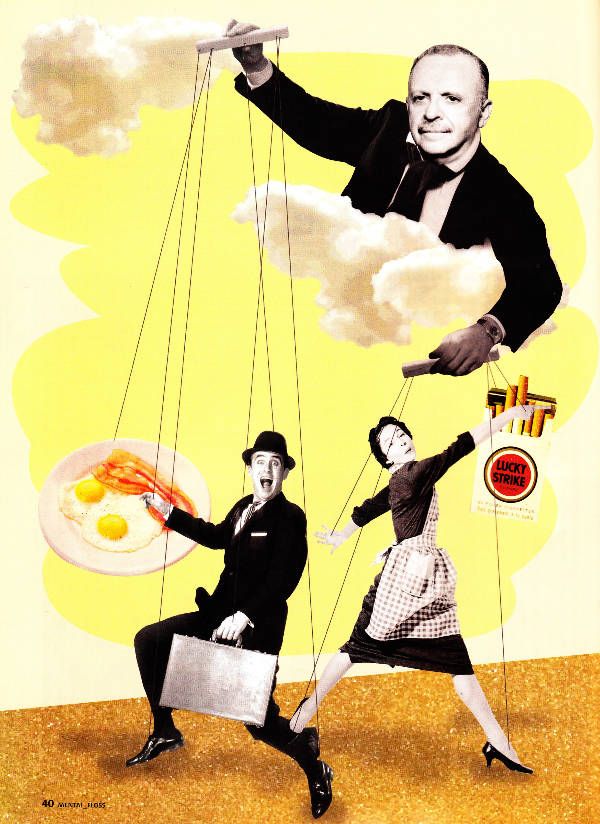
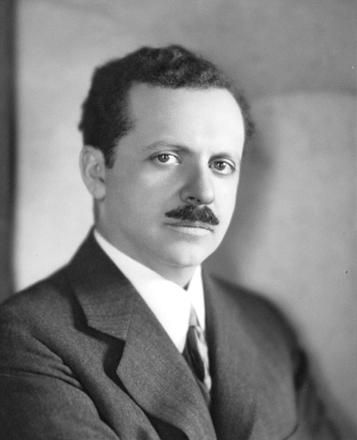 Syphilis and Propaganda
Syphilis and Propaganda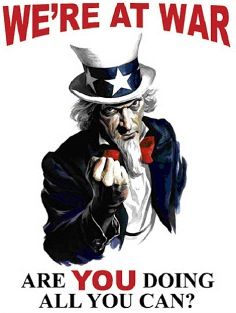 The
future looked bright for Bernays the Producer, but then fate stepped in
again with the outbreak of World War I. Eddie tried to enlist, but was
turned away due to flat feet and poor vision. Undeterred, he set his
sights on the Committee on Public Information -the propaganda machine
responsible for Uncle Sam's "I Want You" recruitment poster. There, as
co-head of the Latin American section, Bernays honed his manipulative
propaganda skills.
The
future looked bright for Bernays the Producer, but then fate stepped in
again with the outbreak of World War I. Eddie tried to enlist, but was
turned away due to flat feet and poor vision. Undeterred, he set his
sights on the Committee on Public Information -the propaganda machine
responsible for Uncle Sam's "I Want You" recruitment poster. There, as
co-head of the Latin American section, Bernays honed his manipulative
propaganda skills.  In
another campaign, Bernays helped a company named Venida salvage lagging
hairnet sales. Short hairstyles were in, thanks to dancehall icon Irene
Castle. And without long locks, women had no need for hairnets. Bernays
created a new market, repurposing the beauty accessory as safety gear.
He asked experts to issue reports explaining the hazards of hair falling
into food or getting caught in machinery. Soon, Venida hairnets became
essential for all restaurant and factory workers.
In
another campaign, Bernays helped a company named Venida salvage lagging
hairnet sales. Short hairstyles were in, thanks to dancehall icon Irene
Castle. And without long locks, women had no need for hairnets. Bernays
created a new market, repurposing the beauty accessory as safety gear.
He asked experts to issue reports explaining the hazards of hair falling
into food or getting caught in machinery. Soon, Venida hairnets became
essential for all restaurant and factory workers.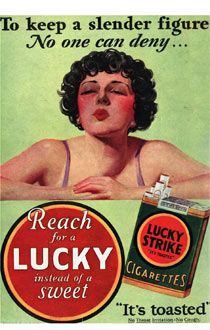 Not
all of Bernays' campaigns were so wholesome. One of his most
well-known, if not controversial, projects was for Lucky Strike
cigarettes. In the late 1920s, American Tobacco Company chairman George
Washington Hill charged Bernays' PR firm with acquiring a new market for
its cigarettes -women. In Eddie's words, "Hill become obsessed with the
prospect of winning over the largest potential female market for
Luckies. 'If I can crack that market.' he said to me one day, "it will
be like opening a new goldmine right in our front yard.'"
Not
all of Bernays' campaigns were so wholesome. One of his most
well-known, if not controversial, projects was for Lucky Strike
cigarettes. In the late 1920s, American Tobacco Company chairman George
Washington Hill charged Bernays' PR firm with acquiring a new market for
its cigarettes -women. In Eddie's words, "Hill become obsessed with the
prospect of winning over the largest potential female market for
Luckies. 'If I can crack that market.' he said to me one day, "it will
be like opening a new goldmine right in our front yard.'"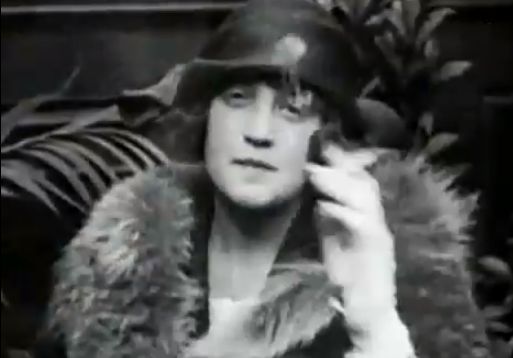
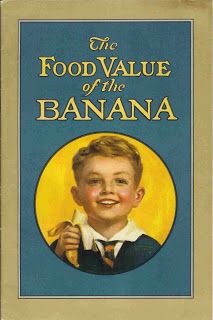 Eddie
felt guilty about other things, too. In the early 1950s, the United
Fruit Company enlisted his help in Guatemala. The company was trying to
hold onto the land leased to them by the government -land that national
officials wanted to reclaim for the Guatemalan people. Bernays responded
by waging a propaganda war that made president Jacobo Arbenz out to be a
Communist. The claim was categorically untrue, but McCarthy-era
politicos seized the rhetoric and rallied for war against the tiny
nation. Bernays enlisted the CIA's help and orchestrated an elaborate
liberation campaign to replace the democratically-elected president with
a United Fruit Company puppet. The resulting Banana Republic lasted for
decades.
Eddie
felt guilty about other things, too. In the early 1950s, the United
Fruit Company enlisted his help in Guatemala. The company was trying to
hold onto the land leased to them by the government -land that national
officials wanted to reclaim for the Guatemalan people. Bernays responded
by waging a propaganda war that made president Jacobo Arbenz out to be a
Communist. The claim was categorically untrue, but McCarthy-era
politicos seized the rhetoric and rallied for war against the tiny
nation. Bernays enlisted the CIA's help and orchestrated an elaborate
liberation campaign to replace the democratically-elected president with
a United Fruit Company puppet. The resulting Banana Republic lasted for
decades. 